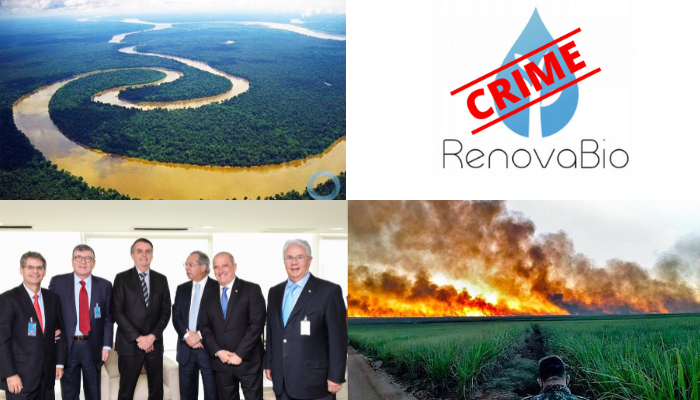Planck E PressCenter Articles
The Cash that Came from Trash
Date published: 2017-10-26
Date modified: 2022-07-29
Reading time: 00:08:16

It is easy or impossible
Salvador Dalí
The monetization of diseconomies is nothing more than a much prettier expression for making money from trash.
According to data from the International Energy Agency, World Bank, and the US Energy Information Administration, in 2014, humans utilized 215EJ (two hundred and fifteen exajoules or two hundred and fifteen quintillion joules) of energy to produce 3.4 trillion tons of 1962 elements, fossil fuels, ores, aromatic and non-aromatic halogenated hydrocarbons, aromatic and non-aromatic compounds, pesticides, metals, inorganic compounds, PAH (polycyclic aromatic hydrocarbons) and radioactive elements/compounds.
Big deal, right? Well, these are the products that result in the physical basis of the economy. However, each cycle that results in the number of products described above generates an environmental liability.
Let's say that this environmental liability is the "Diseconomy."
When the oil industry began at the end of the nineteenth century, the only product of economic value was kerosene, a substitute for whale oil in lighting. The production of kerosene originated the side product, gasoline. Since there was no use for gasoline in the 1800s, it was considered waste and dumped into the rivers. That is, 160 years ago, gasoline was a "diseconomy."
But the question is: how to put all diseconomies under the same standard?
We take the diseconomy in question and see what types of impacts it causes: air, water, soil, human health and what their consequences are: land use; climate change; depletion of ore reserves, hydrocarbons, ozone layer; human, water, soil toxicity, etc. Once all the possible impacts of a diseconomy have been established, the rules of the ZerO2Nature standard of turning trash into cash can be applied, going beyond the notion of a circular economy.
For example, let's see how we turn plastic water and soft drink bottles into currency.
The bottles are composed mainly of polyethylene terephthalate (PET). The caps are of high-density polyethylene (HDPE), and the labels polypropylene (BOPP) or linear low-density polyethylene (LLDPE).
In 2016, more than 800,000 tons of PET bottles were produced in Brazil, corresponding to another 50,000 tons in caps and labels. From these, about 50% became recycled. That is 400,000 tons of PET, in the form of bottles, go to waste, compromising the use of soil, the sea, and freshwater, compromising the water reserves and consequently, human health. Hence, plastic bottles thrown into nature negatively impact air, soil (landfills/dumps), water, and human health. As a unifying agent for the measurement of negative emissions, we adopt the Environmental Impact Potential (EIP). Instead of harming the dynamics of the text with numbers, we publish at the end of this article the adopted scenarios and respective EIPs.
Statistics from US and European environmental agencies point to the following destination for plastic bottles deposited in Nature, for non-OECD countries:
- 60% dumps/landfills;
- 10% freshwater reserves;
- 30% marine waters.
Going back to our initial proposal, we know that 400,000 tons of PET and 25,000 tons of PE in the form of plastic bottles were improperly discarded in Brazil in 2016. So we can calculate their environmental impact:
PET:
- 400,000t related to transportation. Based on the environmental impact potential of PET in relation to global warming, 2,316,000 teq (tonnes equivalent)of CO2, representing 2,316,000 F-DTUs, which are ecological credits of the ZerO2Nature system linked to global warming;
- 400,000t related to human toxicity. Based on the environmental impact potential of PET in relation to human health, 1,688,000 teq of 1-4 dichlorobenzene representing 1,688,000 B-DTUs, which are ecological credits of the ZerO2Nature system linked to human toxicity;
- 000t disposed of in dumps/landfills. Based on the environmental impact potential of PET in relation to soil, 986,4 teq of 1-4 dichlorobenzene, representing 986 B-DTUs, which are ecological credits of the ZerO2Nature system linked to terrestrial ecotoxicity;
- 000t disposed of in rivers/lakes. Based on the environmental impact potential of PET in relation to freshwater reserves, 56,400 teq of 1-4 dichlorobenzene and 436 teq of phosphate, representing 56,400 B-DTUs, which are ecological credits of the ZerO2Nature system linked to ecotoxicity of freshwater reserves and 436 H-DTUs, which are ecological credits of the ZerO2Nature system linked to freshwater reserves’ preservation;
- 000t disposed of in the sea. Based on the environmental impact potential of PET in relation to marine reserves, 924,000 teq of 1-4 dichlorobenzene and 6,900 teq of sulfur dioxide, representing 924,000 B-DTUs, which are ecological credits of the ZerO2Nature system linked to ecotoxicity of marine reserves and 6,900 H-DTUs, which are ecological credits of the ZerO2Nature system linked to marine reserves’ preservation.
PE:
- 25,000t related to human toxicity. Based on the environmental impact potential of PE in relation to human health, 118,000 teq of 1-4 dichlorobenzene, representing 118,000 B-DTUs, which are ecological credits of the ZerO2Nature system linked to human health;
- 15,000t disposed of in dumps/landfills. Based on the environmental impact potential of PE in relation to soil, 90 teq of 1-4 dichlorobenzene, representing 90 B-DTUs, which are ecological credits of the ZerO2Nature system linked to terrestrial ecotoxicity;
- 2,500t disposed of in rivers/lakes. Based on the environmental impact potential of PE in relation to freshwater reserves, 4,125 teq of 1-4 dichlorobenzene and 35 teq of phosphate, representing 4,125 B-DTUs, which are ecological credits of the ZerO2Nature system linked to freshwater reserves ecotoxicity and 35 H-DTUs, which are ecological credits of the ZerO2Nature system linked to freshwater reserves’ preservation;
- 7,500t disposed of in the sea. Based on the environmental impact potential of PE in relation to marine reserves, 59,250 teq of1-4 dichlorobenzene and 510 teq of sulfur dioxide, representing 59,250 B-DTUs, which are ecological credits of the ZerO2Nature system linked to marine water reserves ecotoxicity and 510 H-DTUs, which are ecological credits of the ZerO2Nature system linked marine water reserves’ preservation.
And finally, we get to the point. We know that the environmental liability or diseconomy caused by the disposal of plastic bottles in Brazil in 2016 generated an impact that, if taken from Nature and properly recycled, would generate 2,850,851 B-DTUs and 7,971 H-DTUs. But we need to consider the transport-related emissions of 2,316,000 teq of CO2, which implies the retirement of 2,316,000 F-DTU. The F-DTU conversion value is currently € 10; of the B-DTU is € 15 and the H-DTU is € 50.
That is, if instead of causing pollution, the plastic bottles had been properly recycled, they would have generated revenues of €20 million related to the generation of ecological credits.
To generate eco credits, recycled PET can be used in fabric manufacturing; ropes; office supplies; water tanks, pipes, and fittings; taps, swimming pools, tiles; carpets; synthetic marble; paints and varnishes; lining and plastic parts of cars and trucks; banks of bus, train, and subway; sports equipment, telephone sets, appliances, etc.
Monetization of the diseconomy: ZerO2Nature turning trash into cash and going beyond the circular economy.
SCENARIOS ADOPTED AND RESPECTIVE EIP
PET:
In the air, we can measure the negative emissions of 1t of PET in the following scenario:
- Problem-oriented approach: baseline (CML, 1999) – Global warming GWP100 – GWP100 (IPCC, 2007). In this scenario, the EIP of 1t of PET equals 5.79t equivalent (teq) of CO2.
In freshwater reserves, we can measure the negative emissions of 1t of PET in the following scenarios:
- Problem-oriented approach: baseline (CML, 1999) – Freshwater reserves ecotoxicity (FAETP inf) – FAETP inf. (Huijbregts, 1999&2000). In this scenario, the EIP of 1t of PET equals 1.41t equivalent (teq) of 1-4 dichlorobenzene. In this case, 1-4 dichlorobenzene is adopted as an equivalent factor, analogously to what occurs with CO2, adopted as a reference in the global warming scenario;
- Problem-oriented approach: baseline (CML, 1999) – Eutrophication EP (Heijungs et al. 1992). In this scenario, the EIP of 1t of PET equals 0.0109t equivalent (teq) of phosphate. In this case, phosphate is adopted as an equivalent factor, analogously to what occurs with CO2, as a reference in the global warming scenario.
In marine water reserves, we can measure the negative emissions of 1t of PET in the following scenarios:
- Problem-oriented approach: baseline (CML, 1999) – Marine water reserves ecotoxicity (MAETP inf) – MAETP inf. (Huijbregts, 1999&2000). In this scenario, the EIP of 1t of PET equals 7.7t equivalent (teq) de 1-4 dichlorobenzene. In this case, 1-4 dichlorobenzene is adopted as an equivalent factor, analogously to what occurs with CO2, adopted as a reference in the global warming scenario;
- Problem-oriented approach: baseline (CML, 1999) – Acidification AP (Huijbregts, 1999; average Europe total, A&B). In this scenario, the EIP of 1t of PET equals 0.0575t equivalent (teq) of sulfur dioxide. In this case, sulfur dioxide is adopted as an equivalent factor, analogously to what occurs with CO2, adopted as a reference in the global warming scenario.
In the soil, we can measure the negative emissions of 1t of PET in the following scenario:
- Problem-oriented approach: baseline (CML, 1999) – Terrestrial ecotoxicity (TETP inf) – TETP inf. (Huijbregts, 1999&2000). In this scenario, the EIP of 1t of PET equals 0.00411t equivalent (teq) of 1-4 dichlorobenzene. In this case, 1-4 dichlorobenzene is adopted as an equivalent factor, analogously to what occurs with CO2, adopted as a reference in the global warming scenario.
PE:
As we already considered the transport of plastic bottles in the calculation of negative emissions of PET and the bottle is transported with a label and cap, we can affirm that in the air, negative emissions of 1t of PE have already been computed.
In freshwater reserves, we can measure the negative emissions of 1t of PE in the following scenarios:
- Problem-oriented approach: baseline (CML, 1999) – Freshwater reserves ecotoxicity (FAETP inf) – FAETP inf. (Huijbregts, 1999&2000). In this scenario, the EIP of 1t of PE equals 1.65t equivalent (teq) of 1-4 dichlorobenzene. In this case, 1-4 dichlorobenzene is adopted as an equivalent factor, analogously to what occurs with CO2, adopted as a reference in the global warming scenario;
- Problem-oriented approach: baseline (CML, 1999) – Eutrophication EP (Heijungs et al. 1992). In this scenario, the EIP of 1t of PE equals 0.014t equivalent (teq) of phosphate. In this case, phosphate is adopted as an equivalent factor, analogously to what occurs with CO2, as a reference in the global warming scenario.
- In marine water reserves, we can measure the negative emissions of 1t of PE in the following scenarios:
- Problem-oriented approach: baseline (CML, 1999) – Marine water reserves ecotoxicity (MAETP inf) – MAETP inf. (Huijbregts, 1999&2000). In this scenario, the EIP of 1t of PE equals 7.9t equivalent (teq) of 1-4 dichlorobenzene. In this case, 1-4 dichlorobenzene is adopted as an equivalent factor, analogously to what occurs with CO2, adopted as a reference in the global warming scenario;
- Problem-oriented approach: baseline (CML, 1999) – Acidification. AP (Huijbregts, 1999; average Europe total, A&B). In this scenario, the EIP of 1t of PE equals 0.068t equivalent (teq) of sulfur dioxide. In this case, sulfur dioxide is adopted as an equivalent factor, analogously to what occurs with CO2, adopted as a reference in the global warming scenario.
In the soil, we can measure the negative emissions of 1t of PE in the following scenario:
- Problem-oriented approach: baseline (CML, 1999) – Terrestrial ecotoxicity (TETP inf) – TETP inf. (Huijbregts, 1999&2000). In this scenario, the EIP of 1t of PE equals 0.006t equivalent (teq) of 1-4 dichlorobenzene. In this case, 1-4 dichlorobenzene is adopted as an equivalent factor, analogously to what occurs with CO2, adopted as a reference in the global warming scenario.
It is crucial to note that in addition to the negative impacts caused directly to the environment in terms of contamination of soil, air, and water reserves (fresh and maritime), decomposition of the plastic bottle has a significant potential for impairment of human health.
With regard to human health, we can measure negative PET emissions in the following scenario:
- Problem-oriented approach: baseline (CML, 1999) – Human toxicity (HTP inf) – HTP inf. (Huijbregts, 1999&2000). In this scenario, the EIP of 1t of PET equals 4.22t equivalent (teq) of 1-4 dichlorobenzene. In this case, 1-4 dichlorobenzene is adopted as an equivalent factor, analogously to what occurs with CO2, adopted as a reference in the global warming scenario.
With regard to human health, we can measure negative PE emissions in the following scenario:
- Problem-oriented approach: baseline (CML, 1999) – Human toxicity (HTP inf) – HTP inf. (Huijbregts, 1999&2000). In this scenario, the EIP of 1t of PET equals 4.72t equivalent (teq) of 1-4 dichlorobenzene. In this case, 1-4 dichlorobenzene is adopted as an equivalent factor, analogously to what occurs with CO2, adopted as a reference in the global warming scenario.
Keywords
- circular economy
- environment
- waste management
- human toxicity
- environmental impact
For further information about Planck E PressCenter, please contact us.
Divulging ingenious solutions
The mission of the Planck E PressCenter is to promote ideas, products and theories that have not yet reached the mainstream, as captured in our first release Eccentrics and their Ingenious Solutions.
Newsletter
Sign up for our weekly Planck E Newsletter, complete with the latest ingenious solutions.
Click here for the signup form.
Submit your ingenious solution
We encourage you to submit your ingenious solution, article, press release or "out of the mainstream" technical idea for publication on the Planck E PressCenter. Please send us an e-mail to presscenter@planck-e.com and enquire how.
To learn more about holistic engineering, solutions inspired by nature, monetization of diseconomies, training courses or the incorporation of Being Data to your day-to-day, please follow us on the social networks.

